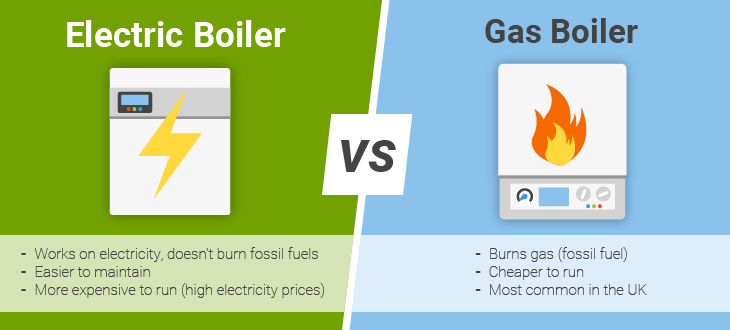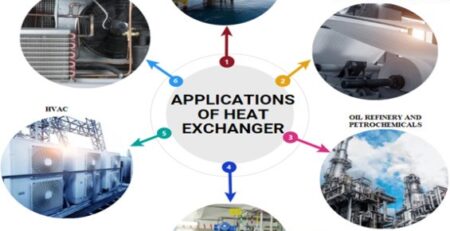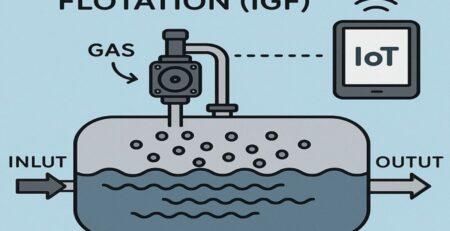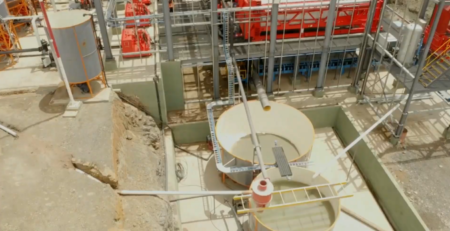Necessity, Requirement of Electric Boiler in Greenfield Projects
Electric boilers can be a viable option for greenfield projects, which are new construction projects developed on previously undeveloped land. Here are some reasons why electric boilers may be beneficial in such projects:
- Electric boilers do not produce any emissions during operation since they do not burn fossil fuels. This makes them a clean and environmentally friendly heating option, aligning with the goals of greenfield projects to minimize their carbon footprint.
- Greenfield projects often prioritize the integration of renewable energy sources such as solar or wind power. Electric boilers can easily connect to the electric grid and operate using electricity generated from renewable sources, further reducing their environmental impact.
- Electric boilers are highly efficient, typically converting nearly all the electricity they consume into heat. This efficiency helps minimize energy waste, making them a good choice for greenfield projects aiming for energy-efficient solutions.
- Electric boilers are relatively easy to install compared to boilers that require flue systems and fuel storage. They don’t need a chimney or a fuel supply line, simplifying the construction process in greenfield projects and reducing infrastructure requirements.
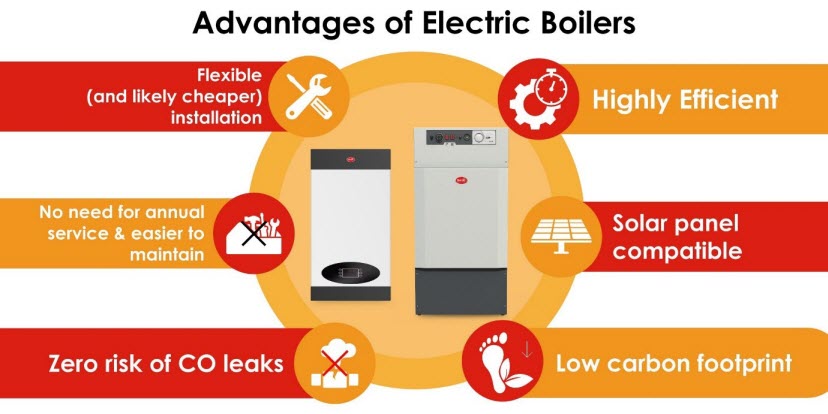
- Electric boilers can be installed in a variety of locations within a greenfield project, thanks to their compact size and absence of flue gas exhaust. This flexibility allows for optimal placement, enabling efficient heating distribution and zoning.
- Electric boilers generally require less maintenance compared to traditional boilers that use combustion. They don’t have burners, fuel lines, or other complex components, reducing the need for regular servicing and inspection.
- Electric boilers operate quietly and do not release any pollutants into the air, contributing to a healthier and more comfortable environment within greenfield projects.
Gas Fire and LDO Fired Boiler
Gas Fire Boiler:
A gas fire boiler, also known as a natural gas or propane boiler, is a type of boiler that utilizes gas as its primary fuel source for heating water or generating steam. Here are some details and disadvantages of gas fire boilers:
Fuel Source:
Gas fire boilers primarily use natural gas or propane as their fuel source. They are connected to the gas supply line, allowing for a continuous and convenient fuel source.
Efficiency:
Gas fire boilers are known for their high energy efficiency. They can achieve efficiency ratings of up to 98%, resulting in cost savings and reduced environmental impact.
Heating Capacity:
Gas fire boilers are available in various sizes and heating capacities to meet the specific requirements of different applications. They can be used for residential, commercial, or industrial heating purposes.
Fast Startup:
Gas fire boilers offer quick startup times, allowing for rapid heating of water or steam production. This makes them suitable for applications where immediate heat or steam is required.
Disadvantages:
Dependence on Gas Supply:
Gas fire boilers require a steady and reliable supply of natural gas or propane. If there is an interruption in the gas supply, it can lead to a lack of heating or operational issues.
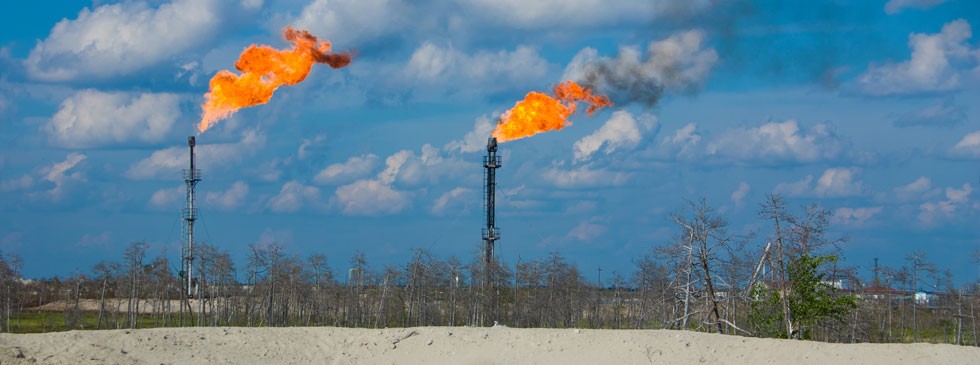
Combustion Emissions:
Gas fire boilers emit greenhouse gases, such as carbon dioxide (CO2), during the combustion process. While natural gas is considered cleaner than other fossil fuels, it still contributes to carbon emissions and climate change.
Carbon Monoxide (CO) Risk:
Incomplete combustion in gas fire boilers can lead to the production of carbon monoxide (CO), a toxic gas. Proper ventilation and regular maintenance are crucial to prevent CO buildup and ensure safety.
Infrastructure Requirements:
Gas fire boilers require the installation of a flue or chimney system to vent the combustion by-products safely. This adds to the infrastructure and construction requirements, especially in retrofitting or greenfield projects.
LDO (Light Diesel Oil) Fired Boiler:
An LDO fired boiler, also known as a diesel, fired boiler, is a type of boiler that uses light diesel oil as its fuel source. It is commonly used in various industrial applications. Here are some details and disadvantages of LDO fired boilers:
Fuel Source:
LDO fired boilers use light diesel oil as their primary fuel source. Light diesel oil is a liquid fuel that is readily available and can be stored conveniently.
Versatility:
LDO fired boilers can be used in a wide range of industrial applications, including power generation, heating, and process steam production.
Efficiency:
LDO fired boilers can achieve high levels of thermal efficiency, depending on their design and operational parameters. Efficient combustion and heat transfer systems contribute to optimal fuel utilization.
Control and Stability:
LDO fired boilers offer precise control over fuel and air ratios, ensuring stable and efficient combustion processes. This enables better control over temperature and steam production.
Disadvantages:
Fuel Availability and Price:
Light diesel oil availability and price can vary in different regions. Fluctuating fuel prices or limited availability can affect the operational costs of LDO fired boilers.
Emissions:
LDO fired boilers emit pollutants during combustion, including sulfur dioxide (SO2) and nitrogen oxides (NOx). These emissions contribute to air pollution and can have negative environmental impacts.
Storage and Handling:
LDO requires proper storage and handling infrastructure. Special considerations must be taken for the safe storage of flammable liquids and the prevention of spills or leaks.
Maintenance:
LDO fired boilers require regular maintenance to ensure optimal performance. Regular cleaning, fuel filter replacement, and inspection of combustion components are necessary to prevent operational issues and ensure safety.
When considering the use of gas fire boilers or LDO fired boilers, it’s essential to evaluate their specific advantages and disadvantages in relation to the project’s requirements, energy costs, environmental considerations, and safety regulations. Consulting with experts in the field, such as HVAC engineers or energy consultants, can provide detailed insights tailored to the specific application.
Electrical Boiler is Emerging as A Choice of Greenfield Projects
An electric steam boiler is a type of boiler that uses electricity as its primary power source to heat water and generate steam. Here are some details about electric steam boilers:
Operation:
Electric steam boilers work by passing an electric current through a heating element, which heats the water and converts it into steam. The steam is then used for various applications such as heating, power generation, or industrial processes.
Efficiency:
Electric steam boilers are known for their high energy efficiency. They can achieve efficiency ratings close to 100% since nearly all the electricity they consume is converted into heat energy. This efficient conversion minimizes energy waste and reduces operational costs.
Safety:
Electric steam boilers are generally considered safe to operate. Unlike boilers that burn fuels, they do not produce flames or combustion by-products, reducing the risk of fire or explosion. Additionally, they don’t require fuel storage or handling, further enhancing safety.

Compact Size:
Electric steam boilers are typically compact, and space-saving compared to boilers that use combustion. Their compact design allows for flexible installation in various settings, making them suitable for both small-scale and large-scale applications.
Control and Precision:
Electric steam boilers offer precise temperature control and rapid response times. They can maintain consistent steam temperatures and pressures, making them ideal for applications that require precise process control or temperature-sensitive operations.
Environmental Friendliness:
Electric steam boilers are considered environmentally friendly because they produce zero emissions during operation. They don’t burn fossil fuels, minimizing air pollution and reducing the carbon footprint. This aligns with the sustainability goals of many projects and industries.
Low Maintenance:
Electric steam boilers generally require less maintenance compared to boilers with combustion systems. They don’t have burners, fuel lines, or flue gas exhaust systems, simplifying maintenance routines. However, regular inspections, cleaning, and component checks are still necessary to ensure optimal performance and safety.
Noise and Air Quality:
Electric steam boilers operate quietly and do not emit pollutants, improving air quality within the operating environment. This can be particularly beneficial in applications that require a clean and quiet working environment, such cipf-es.org as hospitals, laboratories, or residential buildings.

Scalability:
Electric steam boilers can be easily scaled to meet specific steam production requirements. Multiple electric boilers can be installed in parallel to provide higher steam capacities when needed. This scalability makes them suitable for a wide range of applications, from small-scale commercial operations to large industrial processes.
Parts and working principals
Electric steam boilers consist of several key components that work together to generate steam. Here are the main parts of an electric steam boiler and their working mechanisms:
Heating Elements:
Heating elements are the primary components responsible for converting electrical energy into heat. They are typically made of resistance wires, such as stainless steel or Incoloy, that are designed to withstand high temperatures. When an electric current passes through the heating elements, they heat up and transfer the heat to the water in the boiler.
Water Tank/Pressure Vessel:
The water tank or pressure vessel holds the water that is to be heated. It is constructed to withstand the pressure generated during the steam generation process. The tank may have internal baffles or tubes to enhance heat transfer efficiency.
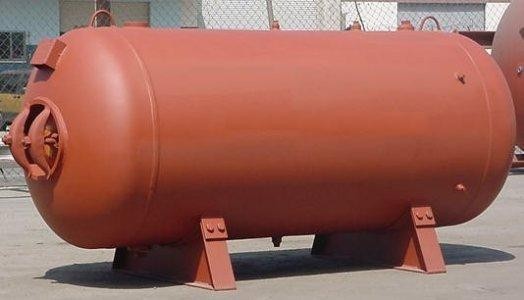
Control System:
The control system manages the operation and safety of the electric steam boiler. It typically includes components such as temperature sensors, pressure sensors, control panels, and programmable logic controllers (PLCs). These components monitor and regulate the water temperature, steam pressure, and various safety parameters.
Safety Valves:
Safety valves are essential for maintaining safe operating conditions within the boiler. They are designed to relieve excess pressure in the boiler to prevent explosions. Safety valves automatically open when the pressure exceeds a set limit, allowing excess steam to escape.
Water Level Control System:
The water level control system ensures that the boiler maintains a proper water level for safe and efficient operation. It typically includes water level sensors and a feedwater pump. The sensors monitor the water level in the boiler, and if it falls below a certain threshold, the feedwater pump is activated to add more water.
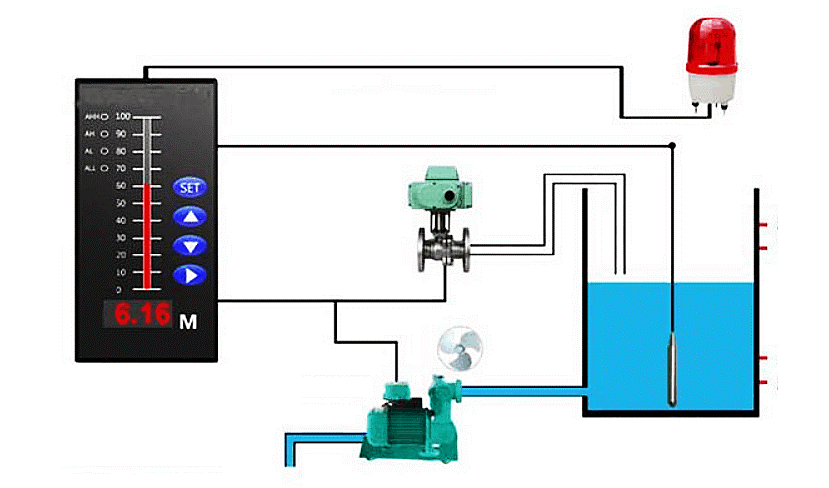
Steam Outlet:
The steam outlet is the point where the generated steam is released from the boiler. It connects to the steam distribution system or directly to the application requiring steam.
Working Mechanism:
Water Fill:
The boiler is filled with water, either manually or through an automated fill system. The water enters the water tank or pressure vessel.
Heating:
When the electric current is supplied to the heating elements, they heat up and transfer the heat to the water in direct contact with them. The heating elements may be submerged in the water or installed externally with the heat transferred through the walls of the pressure vessel.
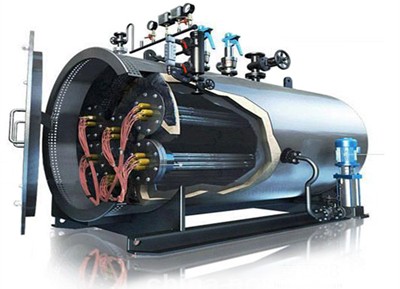
Water Level Control:
The water level control system monitors the water level in the boiler. If the water level drops below a certain level, the feedwater pump is activated to add more water, maintaining a safe and optimal water level.
Steam Generation:
As the water is heated, it reaches its boiling point and converts into steam. The generated steam rises to the top of the boiler, displacing the remaining water.
Steam Release:
The steam exits the boiler through the steam outlet and is directed to the desired application or steam distribution system.
Safety Measures:
The control system continuously monitors the boiler’s temperature, pressure, and other parameters. If any parameter exceeds the safe operating limits, the control system activates safety measures, such as opening the safety valves to release excess pressure or shutting down the heating elements to prevent overheating.
These components and their working mechanisms ensure the safe and efficient generation of steam in an electric steam boiler, providing a reliable source of heat for various industrial, commercial, or residential applications.
Waterman Engineers Australia electric steam boiler adopts fully automatic operation, mainly composed of
- Boiler proper
- Water treatment
- Control cabinet
The main components of an electric steam boiler can be categorized into different systems, including the boiler proper, water treatment system, and control cabinet. Here’s a breakdown of these components:
Boiler Proper:
The boiler proper refers to the core structure and components responsible for generating steam. It includes:
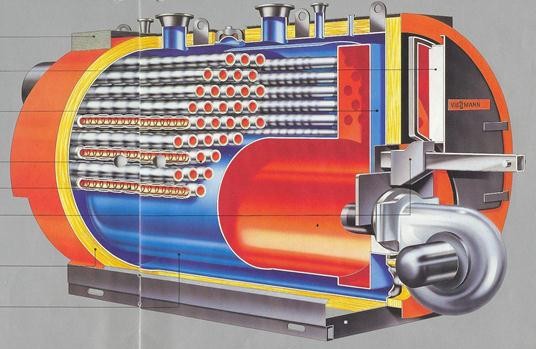
Heating Elements:
These are the resistance wires or electric heating elements that generate heat when an electric current passes through them. They are usually placed inside the boiler tank or attached to its exterior.
Water Tank/Pressure Vessel:
The water tank or pressure vessel holds the water that is heated to generate steam. It is designed to withstand the pressure generated during the steam generation process.
Steam Outlet:
The steam outlet is the point where the generated steam is released from the boiler, either connecting directly to the application or to a steam distribution system.
Water Treatment System:
Proper water treatment is important to maintain the efficiency and longevity of the electric steam boiler. The water treatment system includes:

Feedwater Pump:
The feedwater pump supplies water to the boiler, ensuring a proper water level is maintained.
Water Treatment Equipment:
This may include components such as water softeners, water filters, and chemical dosing systems. These systems help remove impurities from the water, prevent scale formation, and inhibit corrosion within the boiler.
Control Cabinet:
The control cabinet houses the control system components responsible for monitoring and regulating the operation of the electric steam boiler. It typically includes:
Temperature Sensors: These sensors measure the water and steam temperatures to ensure safe and efficient operation.
Pressure Sensors:
Pressure sensors monitor the steam pressure within the boiler, triggering safety measures if the pressure exceeds the set limits.
Control Panel:
The control panel provides an interface for the operator to monitor and control various parameters of the boiler, such as temperature, pressure, and water level.
Safety Devices:
Safety devices, such as safety valves and pressure relief valves, are also controlled by the control cabinet to maintain safe operating conditions and prevent overpressure situations.
Additionally, an electric steam boiler may include other auxiliary components, such as condensate return systems, blowdown tanks, and exhaust systems, depending on the specific requirements of the application.
Electric boilers are emerging as a preferred choice for greenfield
Electric boilers are emerging as a preferred choice for greenfield projects due to several reasons:
Environmental Sustainability:
Greenfield projects often prioritize sustainable and environmentally friendly solutions. Electric boilers align with these goals as they produce zero direct emissions during operation. They don’t burn fossil fuels, eliminating the release of pollutants and greenhouse gases into the atmosphere. This helps minimize the project’s carbon footprint and contributes to a cleaner and greener environment.
Renewable Energy Integration:
Many greenfield projects aim to incorporate renewable energy sources such as solar, wind, or hydropower. Electric boilers can easily integrate with these renewable energy systems. By connecting to the electric grid, they can utilize electricity generated from renewable sources, further enhancing the sustainability of the project.
Energy Efficiency:
Electric boilers are known for their high energy efficiency. They can convert almost all the electricity they consume into heat energy, resulting in minimal energy waste. This efficiency helps reduce energy consumption and lowers operating costs. Greenfield projects that prioritize energy efficiency find electric boilers appealing due to their excellent performance in this regard.
Infrastructure Simplification:
Electric boilers offer simplified infrastructure requirements compared to boilers that rely on combustion. They do not need flue systems, chimneys, or fuel storage tanks, which can simplify the construction process and reduce infrastructure costs. Additionally, electric boilers typically have smaller footprints and can be installed in various locations, providing flexibility in design and layout.
Noise and Air Quality:
Electric boilers operate quietly and produce no combustion-related emissions or pollutants. This leads to improved air quality within the project area, creating a healthier and more comfortable living or working environment. Noise reduction is also beneficial, especially in residential or noise-sensitive areas.
Reduced Maintenance:
Electric boilers generally require less maintenance compared to boilers with combustion systems. They don’t have burners, fuel lines, or ash disposal requirements, resulting in simplified maintenance routines and reduced downtime. This can be advantageous in greenfield projects, where minimizing maintenance activities can save time and resources.
Integration with Smart Grids and Energy Management Systems:
Electric boilers can be easily integrated into smart grids and energy management systems. This enables better control and optimization of energy usage, allowing for demand response strategies, load balancing, and efficient energy distribution within the project.
Uses Electricity as Fuel
An electric steam boiler uses electricity as its primary source of energy to generate heat and produce steam. Here’s how an electric steam boiler utilizes electricity as fuel:
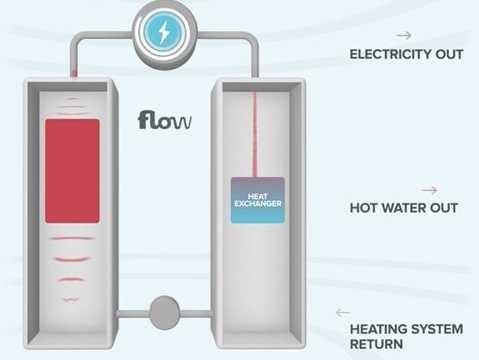
Heating Elements:
The key component of an electric steam boiler is the heating element. These heating elements are typically made of resistance wires, such as stainless steel or Incoloy, that have high electrical resistance. When an electric current is passed through these heating elements, they generate heat due to the resistance, similar to how an electric toaster works.
Electrical Power Supply:
The electric steam boiler is connected to an electrical power supply, such as the electrical grid or a dedicated generator. The power supply provides the necessary electrical energy to the heating elements of the boiler.
Conversion of Electrical Energy to Heat:
When electricity is supplied to the heating elements, they start to heat up rapidly. The resistance wires have a high resistance, which causes them to produce heat as electrical energy is converted into thermal energy. This heat is transferred to the water in the boiler through direct contact or through the walls of the pressure vessel.
Water Heating and Steam Generation:
As the heating elements heat up the water in the boiler, the water temperature rises. Once the water reaches its boiling point, it converts into steam. The generated steam accumulates at the top of the boiler, displacing the remaining water.
Steam Utilization:
The generated steam is then directed to the desired application or steam distribution system. It can be used for various purposes, such as heating, power generation, or industrial processes.
The electric steam boiler uses electrical energy to power the heating elements, which generate heat. This heat is transferred to the water in the boiler, resulting in steam generation. The steam produced can be utilized for different applications, making the electric steam boiler a versatile and efficient choice for heating and steam generation needs.
Waterman engineers Australia electric Boiler stringent emission and fire protection standards
Electric Waterman engineers Australia boilers are known for their ability to meet stringent emission and fire protection standards. Here’s why:
Emissions:
Electric Waterman engineers Australia boilers produce zero direct emissions during operation. Since they do not burn fossil fuels, they do not release pollutants such as nitrogen oxides (NOx), sulfur dioxide (SO2), particulate matter, or carbon monoxide (CO) into the atmosphere. This makes them environmentally friendly and compliant with strict emission standards.
Air Quality:
Electric Waterman engineers Australia boilers contribute to improved air quality within the operating environment. As there is no combustion involved, there is no emission of smoke, soot, or other harmful combustion by-products. This is especially beneficial in indoor settings, where maintaining high air quality is important for the health and well-being of occupants.
Fire Protection:
Electric Waterman engineers Australia boilers have inherent advantages in terms of fire protection. Since they don’t burn fuel, there is no risk of flames or fuel-related fires. This eliminates the need for fuel storage, fuel lines, or combustion systems that are associated with fire hazards. Electric steam boilers generally have fewer fire protection requirements compared to boilers that rely on combustion.
Compliance with Regulations:
Electric Waterman engineers Australia boilers typically comply with various regulations and standards related to emissions and fire protection. These regulations may vary depending on the jurisdiction and specific industry requirements. However, the absence of combustion and the associated emissions make electric steam boilers well-suited for meeting stringent environmental and safety regulations.
It’s important to note that while electric steam boilers excel in emission control and fire protection, other safety measures, such as appropriate electrical installation, grounding, and regular maintenance, are still essential to ensure the safe operation of the electrical components and systems associated with the boiler.
Electric Waterman engineers Australia boilers offer a clean and safe heating solution that can meet the most stringent emission and fire protection standards, making them a suitable choice for applications where environmental sustainability and safety are key priorities.
Waterman Engineers Australia electric boiler meet the current environmental challenges
Electric Boiler meeting current environmental challenges has become essential in today’s world, and electric Waterman engineers Australia boilers play a role in addressing these challenges. Here’s why:

Carbon Footprint Reduction:
Electric Waterman engineers Australia boilers help reduce carbon footprints by eliminating the direct emissions associated with burning fossil fuels. As countries and industries strive to lower greenhouse gas emissions and combat climate change, transitioning to cleaner energy sources like electricity is crucial. By using electric steam boilers, which produce zero emissions during operation, the environmental impact is significantly reduced.
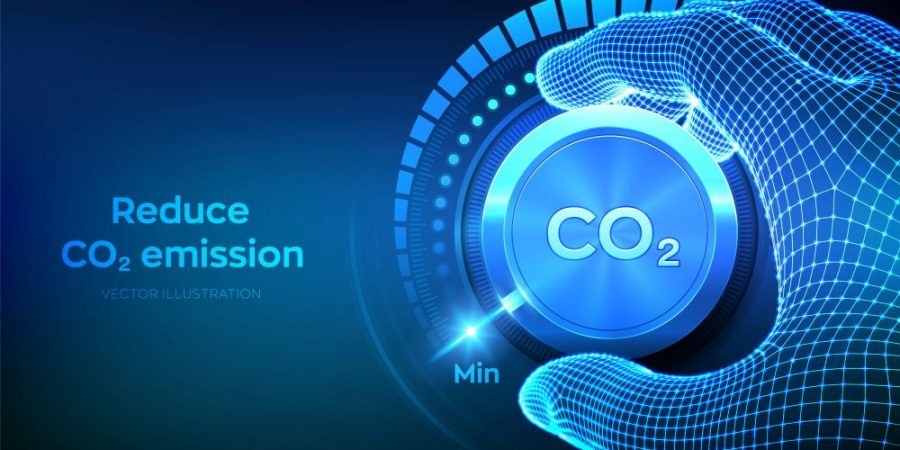
Air Quality Improvement:
Electric Waterman engineers Australia boilers contribute to improved air quality, especially in densely populated areas or indoor environments. By eliminating the combustion process, they eliminate the release of pollutants such as nitrogen oxides (NOx), sulfur dioxide (SO2), and particulate matter. This helps reduce air pollution and its associated health risks.
Renewable Energy Integration:
Electric Waterman engineers Australia boilers can seamlessly integrate with renewable energy sources such as solar, wind, or hydropower. As the electricity grid becomes increasingly powered by renewable energy, using electric boilers allows for a direct utilization of clean energy. This integration supports the transition to a more sustainable and low-carbon energy system.
Sustainable Building Practices:
In the context of sustainable building practices, electric steam boilers align with green building certifications and sustainability standards. Many green building programs encourage the use of energy-efficient and low-emission technologies. Electric boilers, with their high efficiency and zero emissions, fulfill these requirements and contribute to the overall sustainability of the building or project.
Regulatory Compliance:
Environmental regulations are becoming stricter worldwide, with emissions standards and air quality regulations being implemented or tightened. By using electric steam boilers, industries and businesses can ensure compliance with these regulations, avoiding potential penalties and reputational risks associated with non-compliance.
Public Perception and Corporate Responsibility:
As environmental consciousness grows among consumers and stakeholders, companies are increasingly expected to demonstrate sustainable practices. Choosing environmentally friendly technologies, such as electric steam boilers, showcases a commitment to reducing environmental impact and can enhance the public perception of organizations as responsible and environmentally conscious.
Waterman engineers Australia Electric Boiler
100% Efficiency:
Electric Waterman engineers Australia boilers can achieve high efficiency ratings close to 100%. Since nearly all the electricity they consume is converted into heat energy, there is minimal energy waste. This high efficiency helps optimize energy consumption and reduces operational costs.
Zero Emissions at the User’s Site:
Electric Waterman engineers Australia boilers produce zero direct emissions at the user’s site. They do not burn fossil fuels, so there is no release of pollutants such as nitrogen oxides (NOx), sulfur dioxide (SO2), particulate matter, or carbon monoxide (CO). This contributes to cleaner air quality and reduces the environmental impact of the steam generation process.
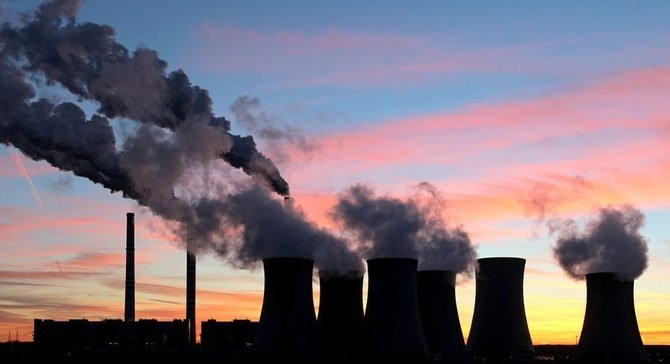
Precise Steam Pressure Control:
Electric Waterman engineers Australia boilers offer precise control over steam pressure. The control system, often equipped with programmable logic controllers (PLCs), allows for accurate adjustment and maintenance of the desired steam pressure levels. This precise control ensures optimal performance and meets the specific requirements of various industrial processes or applications.
Simple Installation and Commissioning:
Electric Waterman engineers Australia boilers are relatively easy to install and commission. They typically have a compact design and can be installed in various settings, making the installation process more flexible. Additionally, since there is no need for fuel storage, flue gas exhaust systems, or complex combustion infrastructure, the installation and commissioning processes are simplified.
Ease of Regulatory Inspections:
Electric Waterman engineers Australia boilers can simplify the regulatory inspection process. Since they produce zero emissions and comply with strict emission standards, inspections related to emissions are generally less complex and require fewer compliance checks. This can lead to smoother regulatory inspections and easier compliance with environmental regulations.
Low Maintenance and Service Costs:
Electric Waterman engineers Australia boilers generally have lower maintenance and service costs compared to boilers with combustion systems. They don’t have burners, fuel lines, or flue gas exhaust systems that require regular maintenance and servicing. However, routine inspections, cleaning, and checks of components such as heating elements and control systems are still necessary to ensure optimal performance and safety.
Robust Construction for Long Life Operation:
Electric Waterman engineers Australia boilers are typically built with robust construction to ensure durability and long-life operation. The materials used, such as stainless steel or other corrosion-resistant materials, are selected to withstand high temperatures and pressures. This construction quality enhances the longevity of the boiler, reducing the need for frequent replacements and ensuring reliable and continuous steam generation.
Easy User Interface with Navinergy Control System:
The Navinergy control system is a user-friendly interface commonly used in electric steam boilers. It provides an intuitive and easy-to-use platform for monitoring and controlling various parameters of the boiler, such as temperature, pressure, and water level. The user interface simplifies the operation of the boiler and allows for efficient control and adjustment of the steam generation process.
Electric Waterman engineers Australia boilers excel in efficiency, emission control, precise control, ease of installation and commissioning, regulatory compliance, maintenance costs, construction quality, and user interface. These features make them a reliable and sustainable choice for steam generation in various industrial, commercial, or residential applications.
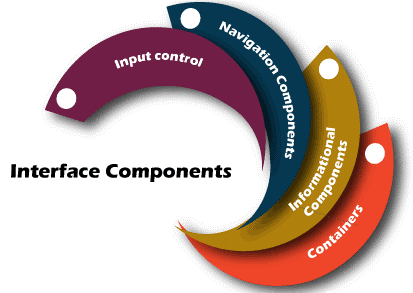
FAQs: Requirement of Electric Boiler in Greenfield Projects
Q: What is an electric boiler?
An electric boiler is a heating device that uses electricity as its primary source of energy to generate heat and produce steam or hot water.
Q: Why are electric boilers suitable for greenfield projects?
Electric boilers are suitable for greenfield projects because they produce zero emissions, have high efficiency, and can be powered by renewable energy sources, aligning with sustainability goals.
Q: Are electric boilers cost-effective compared to other boiler types?
Electric boilers can be cost-effective in terms of installation, maintenance, and efficiency. However, operating costs may vary depending on local electricity rates.
Q: What capacity range is available for electric boilers in greenfield projects?
Electric boilers come in various capacity ranges to meet the specific heating or steam requirements of greenfield projects, ranging from small-scale to large-scale applications.
Q: Can electric boilers provide heating and hot water simultaneously?
Yes, electric boilers can be designed to provide both heating and hot water, making them suitable for multi-purpose applications in greenfield projects.
Q: Are electric boilers suitable for industrial applications in greenfield projects?
Yes, electric boilers can be used for industrial applications, such as process heating, sterilization, and food production, making them versatile for different greenfield projects.
Q: How are electric boilers controlled and monitored?
Electric boilers are typically controlled and monitored through a control panel or control system, allowing for adjustment of temperature, pressure, and other parameters.
Q: Do electric boilers require water treatment systems?
Yes, water treatment systems are recommended for electric boilers to prevent scale formation, corrosion, and ensure optimal performance and longevity.
Q: Can electric boilers be integrated with renewable energy sources?
Yes, electric boilers can be easily integrated with renewable energy sources like solar or wind power, allowing for greener and more sustainable operation.
Q: What safety features are included in electric boilers?
Electric boilers include safety features such as pressure relief valves, temperature sensors, and automatic shut-off systems to ensure safe operation.
Q: Are electric boilers eligible for government incentives or rebates?
Depending on the region, there may be government incentives or rebates available for the installation of electric boilers as part of energy efficiency programs.
Q: What is the expected lifespan of an electric boiler?
With proper maintenance, electric boilers can have a long lifespan, often exceeding 15-20 years, making them a durable and reliable choice for greenfield projects.
Q: Can electric boilers be used in off-grid or remote locations?
Yes, electric boilers can be used in off-grid or remote locations as long as there is access to an electrical power source, making them suitable for diverse greenfield projects.
Q: Do electric boilers require regular servicing?
Electric boilers require regular inspections, cleaning, and maintenance, particularly for components like heating elements, control systems, and water treatment equipment.
Q: Are electric boilers subject to regulatory inspections and certifications?
Yes, electric boilers are subject to regulatory inspections and certifications to ensure compliance with safety, environmental, and efficiency standards.

